Can stories help change behaviour? This was what Dr Sheila Murphy, a professor of communication at the University of Southern California, sought to find out in a study.
Her research team surveyed about 700 women between 24 and 45 years old, randomly selected from the African-American, Mexican-American and non-Hispanic white communities in Los Angeles. The survey established what these women had already known about cervical cancer, and if and when they had been screened for the cancer.
The women then watched either a narrative film or a non-narrative one. Both films carried the same 10 facts about cervical cancer; the difference was how this information was communicated.
The narrative film, The Tamale Lesson, told a fictional story centred on a family’s preparation for a quinceañera, a Latin American ceremony on a girl’s 15th birthday that marks her transition to adulthood. Playing the roles of the family’s daughters preparing for the ceremony, actors discussed how cervical cancer could be prevented, detected and treated.
On the other hand, the non-narrative film took a more traditional approach. It conveyed facts and figures while featuring real doctors and patients.
Six months later, the researchers found that the women who watched The Tamale Lesson, across all the ethnic groups, were more supportive towards Pap testing than those who watched the non-narrative film. And the Mexican-American group who watched the narrative film went from having the lowest screening rate (32%) to the highest (82%).
What did the results mean?
The story-based narrative film was more effective than the non-narrative film in changing behaviour.

The narrative film, The Tamale Lesson, helped improve the cervical cancer screening rate among the Mexican-American women who watched it.
The Strategy of Story for Public Agencies
The results from the above study corroborate what we have always done as an experience strategy consultancy. We seek to incorporate stories into every experience we strategise and design, because stories provide a powerful means to communicate information, build trust and motivate change in perspectives and actions.
Stories are especially important in the public sector’s communication strategy. For public policies to be effective, they must be efficacious in solving citizens’ problems and improving their lives. However, what is good for the people may not be eagerly accepted by them. So, how can public agencies gain citizens’ trust, get their consensus and motivate them towards change?
The short answer: Public agencies need to tell stories that go beyond hard facts and concrete data to move hearts and change minds.
Strategies for Telling Stories That Build Trust, Move Hearts and Change Minds
Stories can be told in many forms, from the written word and images to videos and digital and multimedia presentations. They can be presented in different settings, whether books, films, digital apps or spaces like galleries, exhibitions and attractions.
How do you tell stories effectively? I’d like to share HOL’s key strategies for telling stories that are not only communication tools that build trust but are also change agents.
1. Determine your core message first
If you don’t know what you want to say, you can’t know how to say it. The most important thing isn’t deciding your storytelling methods. It is to decide the core message of your experience – the single most important takeaway for your audience.
This takeaway is the knowledge or information you want to share with your audience, the emotion you want them to feel, or the change in perspective or action you want to influence in them – or it can be all three things. After determining the takeaway, you then decide the stories to support it and the storytelling methods to use.
At HOL, we use our proprietary strategy framework, CRM – Communicate, Resonate and Motivate – to determine core messages and their supporting stories. For more on CRM, read how we helped The Esplanade – Theatres on the Bay strategise and design Pip’s Trail, a digital quest for family and school groups.
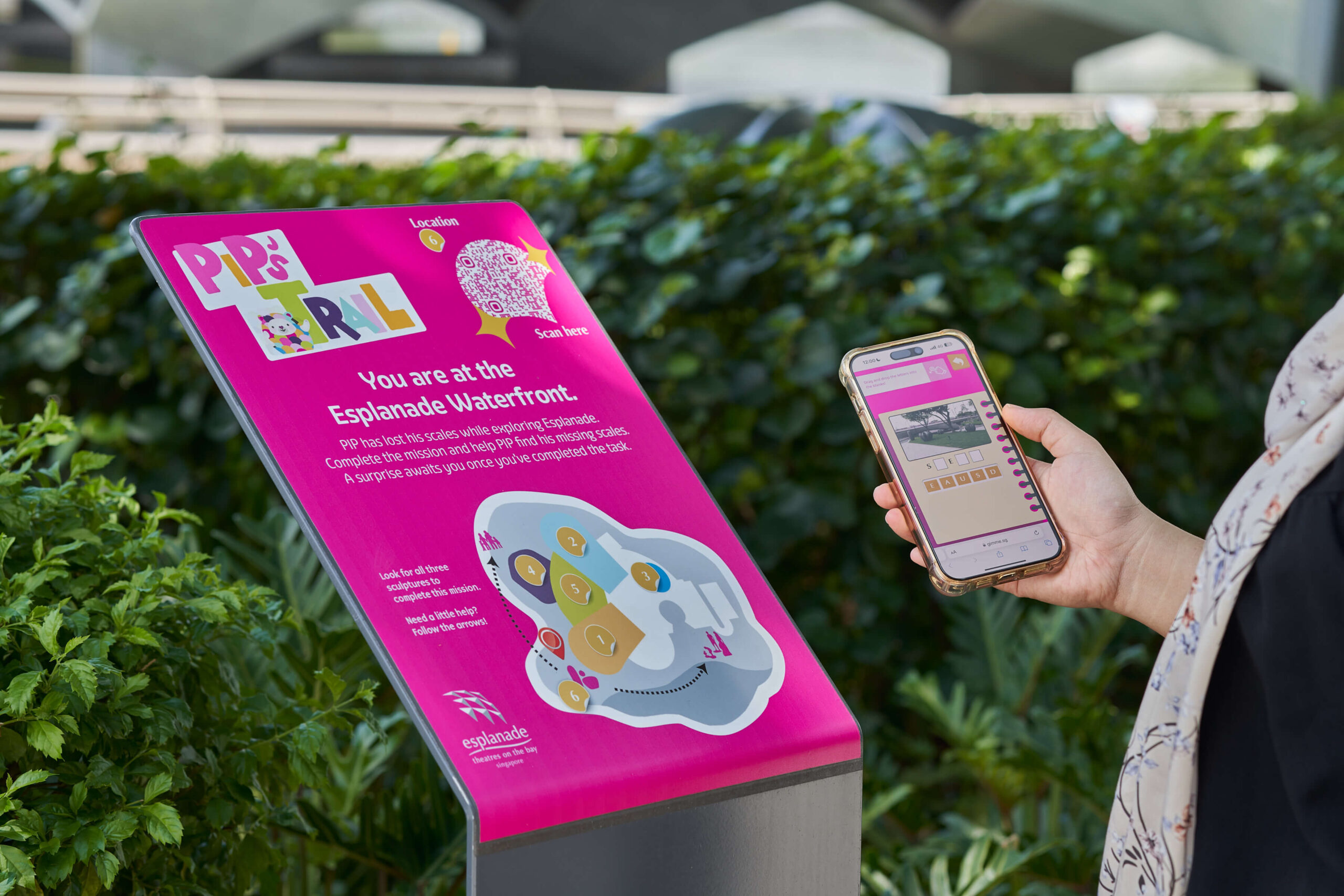
2. Tell your stories in spaces
Broadly speaking, there are three types of experiences for spaces: physical (such as exhibitions, galleries and attractions occupying physical spaces), digital (such as web apps in the online space) and phygital (which combines physical and digital experiences, such as augmented reality).
If you have a physical space, you have the added advantage of “seeing is believing”. The tangible nature of a physical experience lends authenticity and credibility. If your experience is well-planned and engaging, your audience’s trust in you naturally follows.
Additionally, in a physical space, you can strategically combine storytelling methods such as artefacts, graphic design, videos, multimedia, lighting, soundscapes, smells, temperature and more to tell your stories. You can also use the physical layout of your space to build a thematic or chronological flow of stories that unfold like the chapters of a book or scenes of a movie.
Using various storytelling methods, your physical experience engages your audience’s multiple senses, which means they are more likely to be transported to an imagined world where they step into the characters’ shoes, become mentally focused on and respond emotionally to the story events, and form vivid mental images.
According to Dr Melanie Green, a professor of communication at the University at Buffalo who studies the psychology of storytelling, people who are “more transported” – that is, more immersed – are more likely to adopt beliefs and behaviours consistent with those in the story.
This was found to be true in Dr Murphy’s research study above. Mexican-American respondents identified with the Latina characters in the story-based narrative film and were reported to be the most transported into the film. As a result, the cervical cancer screening rate for this group increased from the lowest to the highest among all respondent groups after the study. The more immersed your audience is in your story, the more likely they are to believe in your message and adopt the change you advocate.
3. Help the public identify with the characters in your stories
For Singapore’s 50th year of independence, HOL strategised and curated Singapore’s Economic Miracle, an exhibition that chronicled the nation’s economic development. While the exhibition organiser, the SG50 Economic and International Committee, wanted to celebrate Singapore’s economic success, they also wanted to inspire the current generation to carry the Singaporean traits of a can-do spirit and resilience into the future.
This example shows that for the public sector to get the people’s buy-in for its visions and plans for the nation’s future, talking at them with top-down demands would not cut it. As studies have shown, people are more inclined to adopt behaviours if they observe them in others, particularly if they view these individuals as similar to themselves.
Therefore, besides featuring iconic Singaporean brands, the exhibition highlighted Singaporeans’ stories from the nation’s economic journey. These were not only stories about their successes, but also stories about their struggles and failures. The audience identified with the Singaporeans featured and saw themselves in their stories. Feedback from the audience showed they went away feeling proud to be Singaporean, optimistic and invested in the nation’s future, knowing they could contribute to Singapore’s growth just like those who came before them.
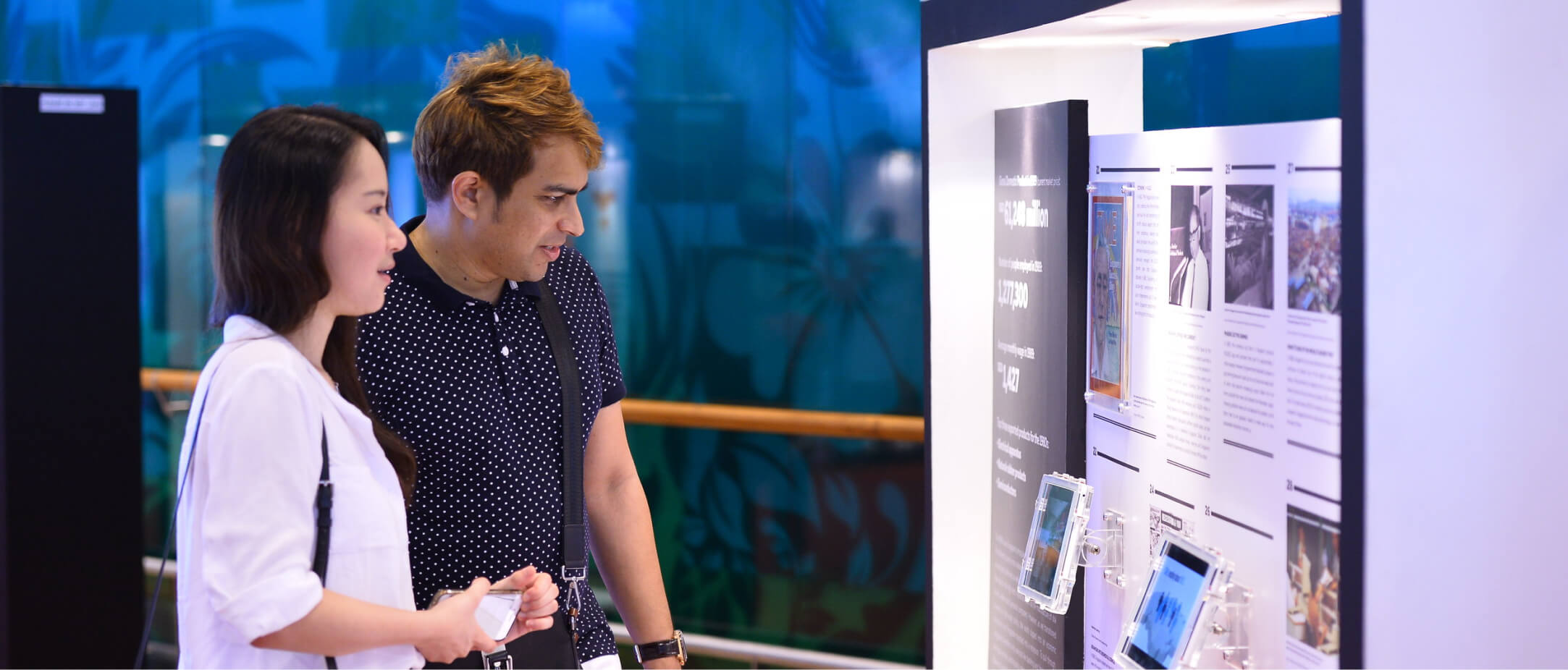
4. Co-create stories with the public
At the NIE Visitors Learning Centre, at the National Institute of Education (NIE), an experience strategised and designed by HOL, visitors provide their feedback about their visits and the NIE experience on a digital photo wall.
By allowing its audience to share their experiences using technology, the gallery turns them from passive consumers of information into engaged participants, whose stories and perspectives can help shape the organisation’s future.
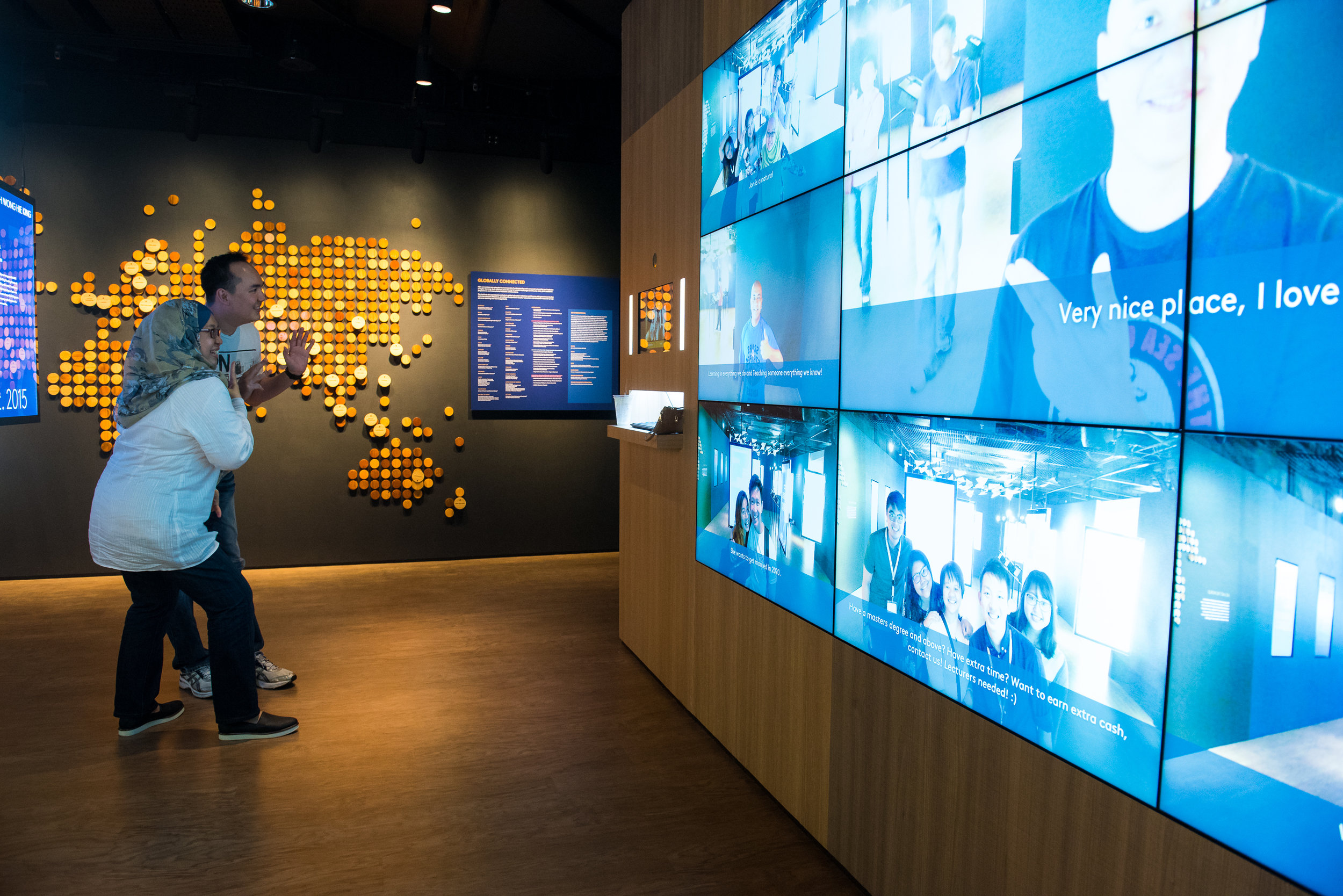
Even if technology is unavailable, you can still involve the public. For example, as the experience strategist for the Singapore Discovery Centre’s Sandbox Experience, HOL interviewed Singaporeans, curated their stories and shared them in the gallery to inspire Singaporeans to continue co-creating the nation’s future.
These storytelling methods help engage the public in co-creating the future, thus fostering a deeper sense of ownership and inclusivity. When your audience is personally invested in your experience and stories and emotionally connected to them, they are more likely to trust you.
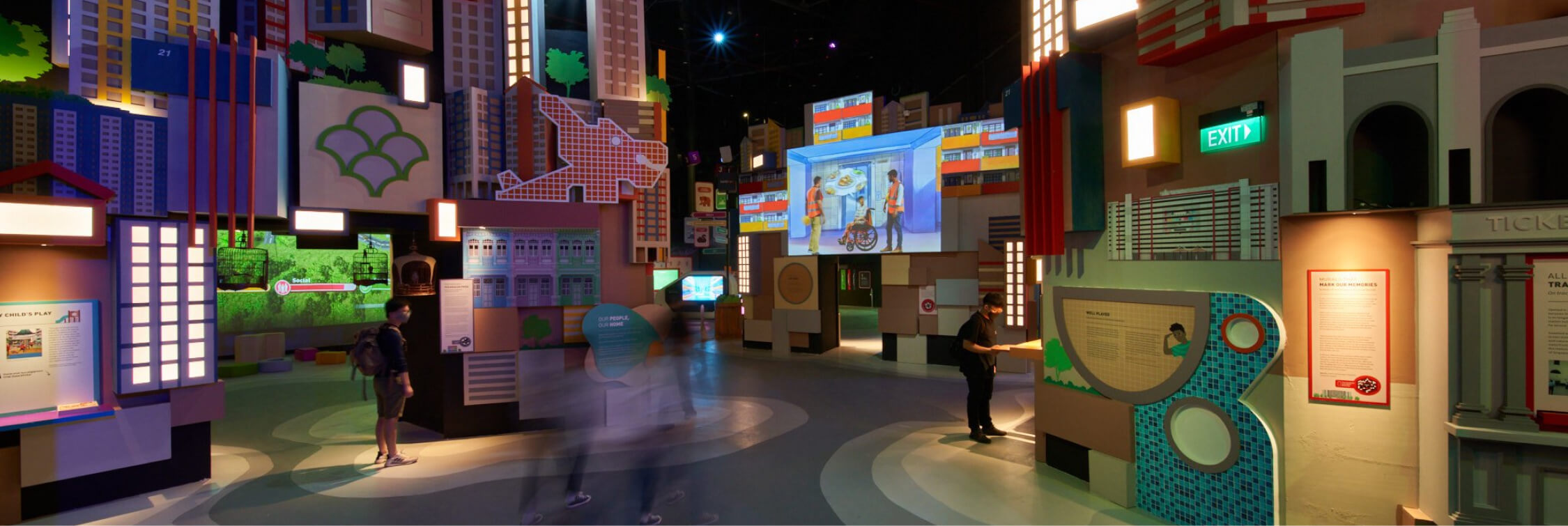
Final Thoughts
Singapore’s Changi Airport is one of the most well-regarded airports worldwide, putting the country on the global map for efficiency. However, efficiency isn’t all there is to Singapore. How can the airport, serving as Singapore’s ambassador, show visitors its vibrant, multifaceted charms?
Even though the airport’s terminals are functional spaces, they are also the perfect settings for storytelling that reinforces Singapore’s identity. For example, the Changi Airport’s gardens, from the Butterfly Garden in Terminal 3 to the Canopy Park in Jewel, are visitors’ first or final encounters with Singapore as a “City in Nature”.
The Heritage Zone in Terminal 4, Peranakan culture – a hybrid of Chinese, Malay and Western cultures unique to this part of the world – is in full-on display. The zone features replica facades of Peranakan shophouses, a film that tells a love story between Peranakan characters, a traditional Peranakan wedding and a gallery showcasing colourful and intricate Peranakan furniture, costumes and chinaware. By sharing stories about Peranakan culture, the airport not only delights foreign visitors with glimpses into Singapore’s multicultural heritage but also fosters a sense of pride among Singaporeans.
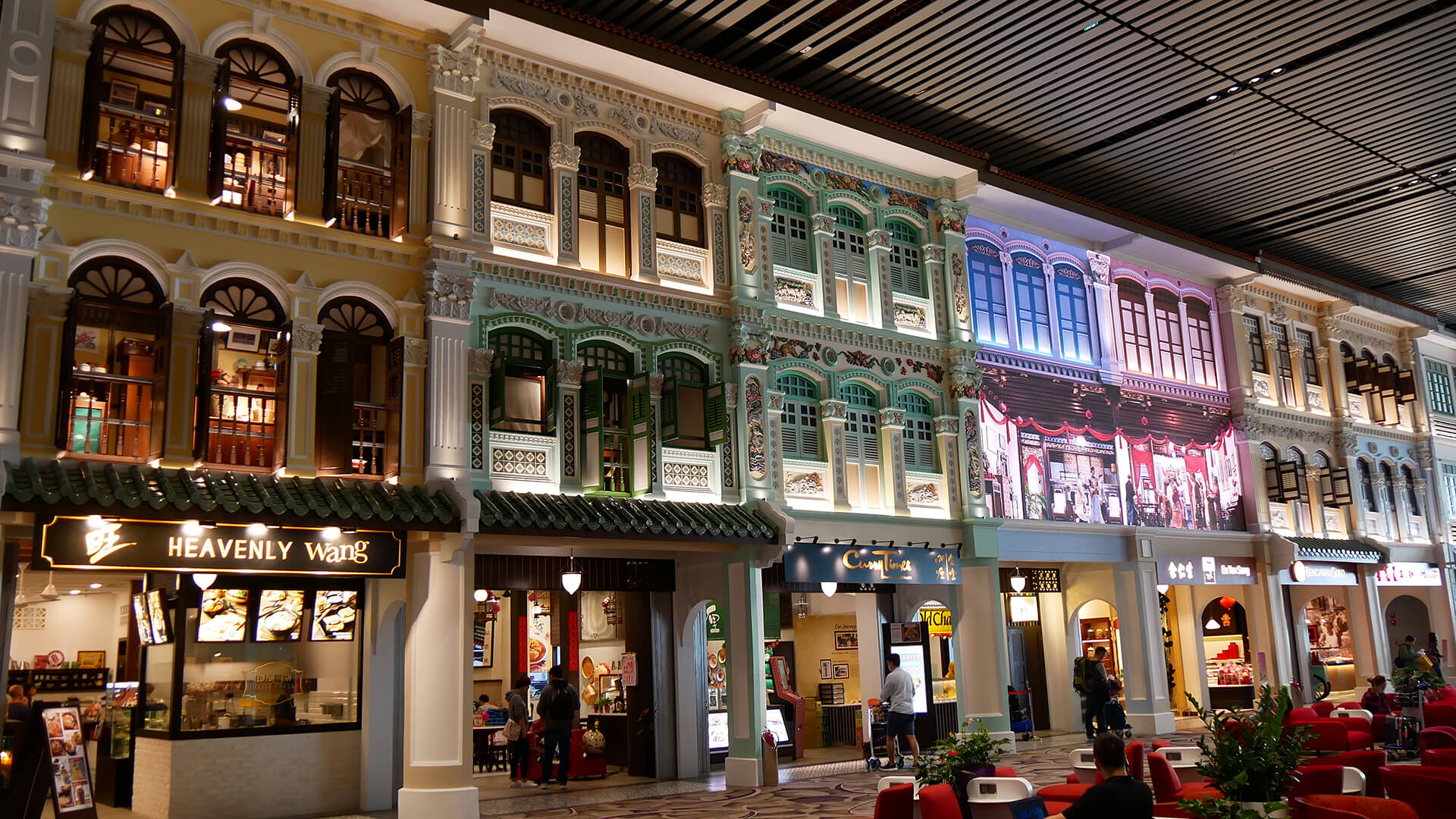
You might think, “My space is not built for storytelling, so it will be difficult to tell stories.” But as Changi’s example shows, with the right strategies and creativity, you can tell the most compelling and delightful stories, even if your space is a functional one.

